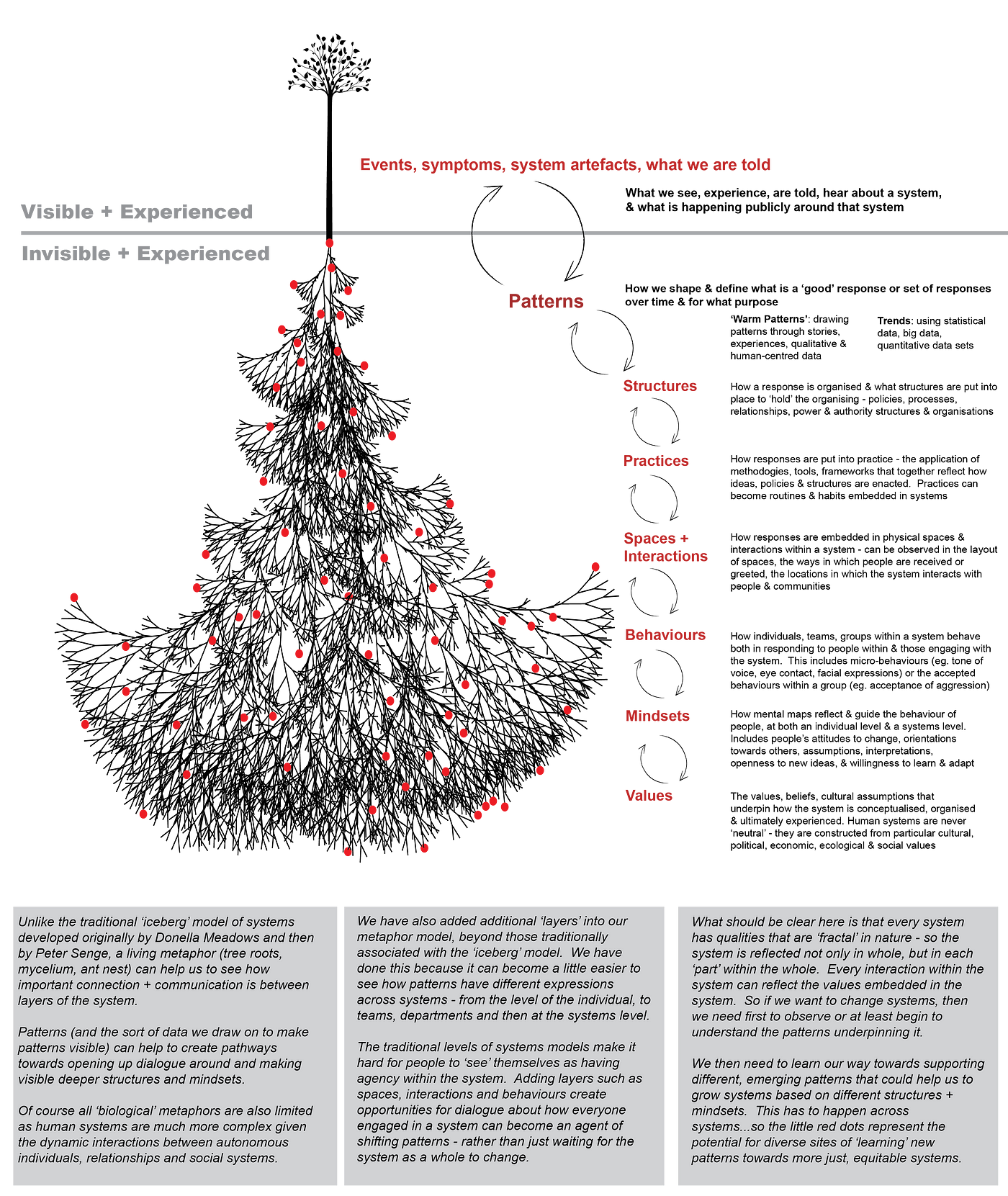Blog by Griffith University Yunus Centre: “In simple terms, patterns are interconnected behaviours, relationships and structures that together make up a picture of what ‘common practice’ looks like and how it is ultimately experienced by people interacting with and in a system.
If we take Public Services in the twenty-first century here are some examples.
Public Service organisations have most often been formed around concepts such as universal access, service delivery, social safety nets, and public provision of critical infrastructure. Built into these elements are patterns, like:
Patterns of relationships: based on objectivity, universalism, professional relationships.
Patterns of resourcing: focused on rationing, efficiency, programmatic resource flows.
Patterns of power: centred on professional expertise, needs assessments, deserving access to spaces and services.
On the surface, these are not necessarily negative and there have doubtless been many successes enabling broad access to services and infrastructure.
It’s also true though that there remain many who have not benefited, who have missed out on access or opportunity, and who have actually been harmed by and within the system.
What is needed is a foundation for public systems that moves away from goals of access to more and better servicing of communities, and towards goals around learning how we can promote patterns of thriving, aspiration, success and ‘wellbeing’…(More)”.

